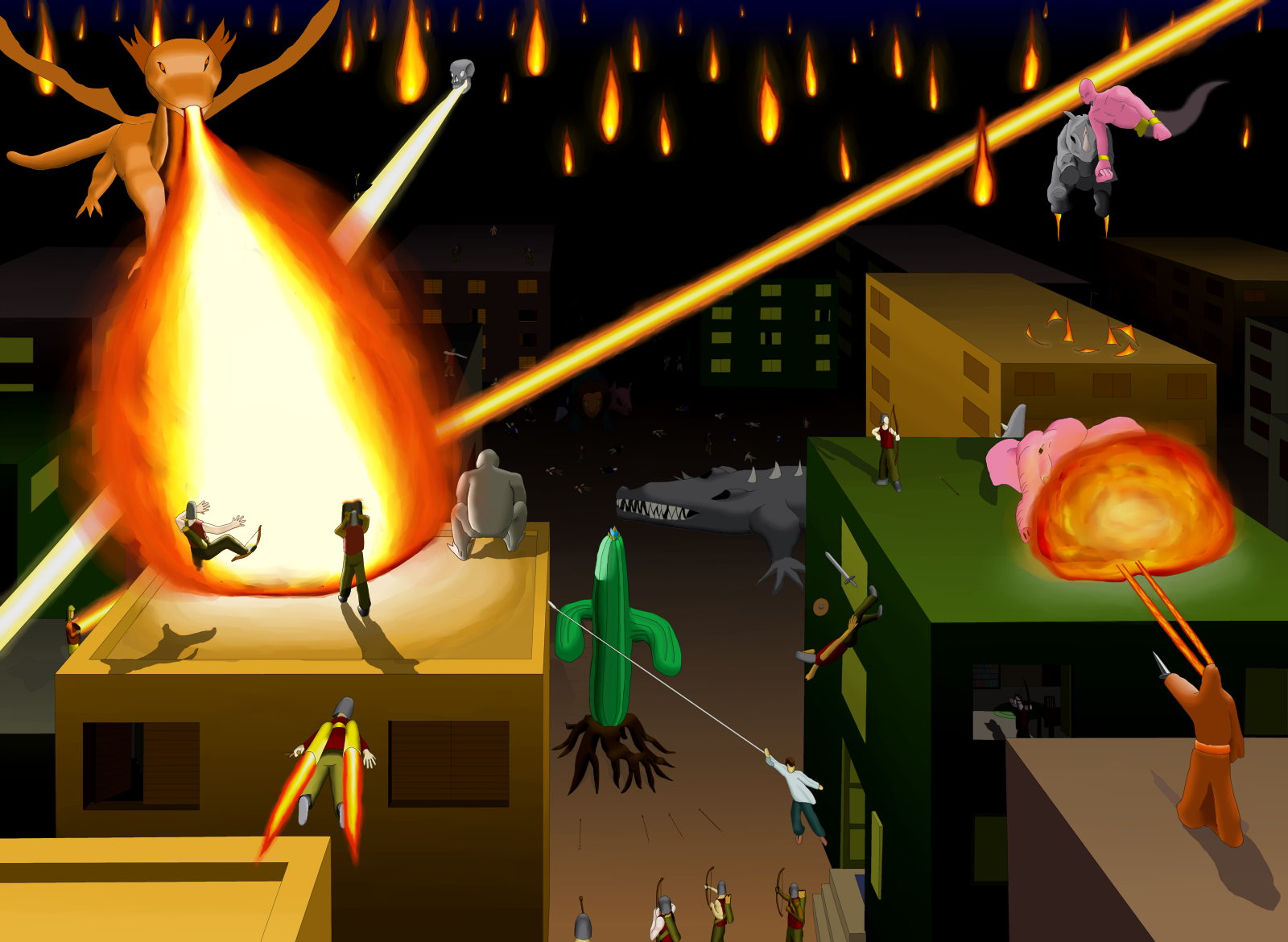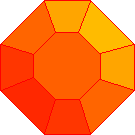Gempunks
Introduction
Gempunks is a tactical RPG battle game which uses large numbers of d6s. Gempunks worlds are worlds of high adventure, fantastical stunts, peculiar beasts, and elaborate magical contraptions. Masterful warriors leap from mythical steeds onto the backs of dragons to do battle with dangerous wizards; brutal bandits hammer through stone walls to abduct nobles; hordes of warriors storm across the land, destroying all who oppose them.
Basic Mechanics
Making Checks
Unless otherwise specified, a die roll consists of rolling a d6, adding values, and comparing with some number. A roll equal to or greater than the desired number (sometimes called a DC) is a success. For attacks and Will Saves, a roll of 6 counts as a roll of 9.
Dealing Damage
When rolling damage against a target, the target's Toughness is the number of points of damage it takes to inflict a single wound on a target. A high demolition value for an attack allows you to effectively fire through obstacles and armor into protected targets, or just quickly destroy objects, described in more detail in the Materials section of the Environment page.
When damage wounds a creature, this may cause the creature to fall unconscious, die, or be destroyed. If the wounds inflicted bring the creature down to 0 or less HP, they fall unconscious; if they bring the creature down to -2 or less HP, the creature dies; and if they bring the creature down to -4 or less HP, their body becomes destroyed and impossible to reanimate without repairs (see Dead).
Round and Actions
Combat is composed of a series of 15 second rounds, during which each character may take a turn.
Initiative
When any player cares about the turn order, each player (including the DM) rolls a single d6 for initiative to apply to all characters they control. Then each character they control applies its own Agility as a bonus to the roll.
Break ties randomly when needed, but note that characters can choose to Delay their turns for a better turn order.
Actions
During each character’s turn, that character may take a standard action and a move action, as well as engaging in many smaller actions. Instead of a standard action, a character may take another move action. A round (each character taking a turn) is fifteen seconds. There are also immediate actions, which can be used on any turn, and interrupt the current event or action immediately: each immediate action taken requires the character to expend one move action as soon as they are able; a character cannot have more than two pending move actions of this type at a time.
Durations
If something has a duration measured in rounds, that means it ends at the beginning of the current initiative count, some number of rounds later.
Arithmetic
Apply addition and subtraction before multiplication or division (percentages are multiplication).
A Note on Units
Values of meters and kilograms are provided with great precision. That does not mean you are expected or required to keep track of them precisely: if you think of a meter as "three feet" and a kilogram as "three pounds", you will seldom go wrong, and it is usually reasonable to be even less accurate than that for the sake of rapid play. It's generally not a big deal to not keep careful track of the weights of smaller items; if characters sometimes carry a dozen percent or so more equipment than they should, the game will not break. Measuring distances is also much faster if you are not too careful about it, and it's generally both faster and more friendly to accept or object to another player's claim that they're moving "just barely out of range" immediately rather than remaining silent and doing your own, slightly different measurement later.
Character Generation
Characters and the rules for how to gain them are described in the Characters section.
The Invisible Hand of the DM
The DM has to spend some effort deciding the point limits of the players and the point values of their opponents. Read some thoughts on that in the DM Guidelines section.
Equipment
See the rules for arms and armor.
Gems
Gems are the main source of magical power in Gempunks, harvested from certain dangerous monsters. Spellcasters implant gems inside their bodies and attune each gem to a different spell in order to use their magic; they have to build a tolerance for this, as ordinary people cannot handle a large number or variety of gems in their bodies. Magic items also typically require gems in order to function.
Other Rules
All of the pages in Base Rules are important.
Table of Contents
| Character Creation and Playing Guide | DM Advice | Rules |
|---|---|---|

